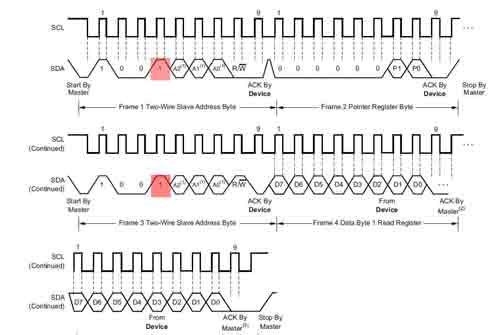Hello
I'm evaluating the TMP007 using this board:
http://www.exp-tech.de/advanced_search_result.php?keywords=tmp007&XTCsid=2a8ba5de221b31f3f8e273679d2dea46
It can't make the math engine working properly.
The sensor is used with the default registers values, supply 3.3V and I read Vsensor, Tdie and Tobj every 3 sec.
At the beginning I read Tdie=20°, Tobj=21°.
When I put a heat source (my hand) on top of the sensor, at distance of few cm. the Vsensor increase, the Tobj after some reading shows about 34°, but slowly also the Tdie increase. When this happens the Tobj decrease.
After few minutes, I have a reading of both Tdie and Tobj around 23°.
If ,at this point, I remove the hand the Tobj fall to 17° and slowly, as the Tdie decrease, it will goes again to the initial reading.
So, what I making wrong? It seems that the math engine is not working.


